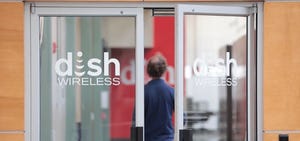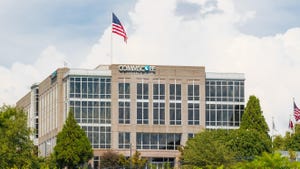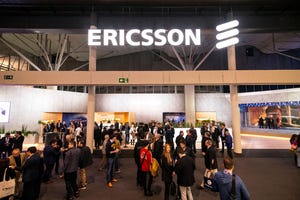Teem's Tiny Metro Amp Makes Waves
Teem's amplifier is used in experiments by AT&T and Lucent and demonstrated here at OFC
March 21, 2001

ANAHEIM, Calif. -- OFC2001 -- When Teem Photonics launched its erbium-doped waveguide amplifier (EDWA) gain block on Monday (see Teem Shows Tiny Amplifier) only a handful of people stopped by to hear its presentation.
Perhaps the press should have paid a little more attention, considering that Teem has co-authored two technical papers being presented today and that at least one vendor is using the tiny amplifier in a demonstration here at the show, according to David Heatley, Teem's VP of North America.
Teem's waveguide amplifier works in much the same way as an erbium-doped fiber amplifier (EDFA), but it is much smaller because the 20m spool of erbium-loaded fiber is replaced by a waveguide just a few millimeters long (see Teem Raises Component Steam). It has less gain than an EDFA, but its small size and potentially low cost make it a good choice for metro networks.
In paper WBB3, AT&T Research Labs describes a 160km-long metro ring network carrying four channels at 2.5 Gbit/s. There are four nodes in the ring where wavelengths can be dropped, and each node uses one of Teem's amplifiers.
In paper WDD5, Lucent Technologies' Bell Labs and Lehigh University report a successful transmission of eight wavelengths carrying QAM signals over 175km. Teem's amplifier provided up to 14 dB of gain in the middle of the span.
Heatley wouldn't give us the name of the vendor using the waveguide amplifier in its booth demo, because he's signed an NDA.
Nevertheless, it all shows that Teem is gaining a first-mover advantage, in the same way that Altitun -- now part of ADC Telecommunications Inc. (Nasdaq: ADCT) -- did when tunable lasers first arrived on the scene.
Teem needs to make the most out of being first, because a couple of other startups are also working on small waveguide amplifiers.
Northstar Photonics Inc., a company backed by ADC, showed a prototype waveguide amplifier at its booth. On the face of it, the technology looks very similar -- both use phosphate glass that's co-doped with erbium and ytterbium. Ray Slonina, Northstar's executive VP, admits that his company is a bit behind Teem in its development.
Molecular OptoElectronics Corp. (MOEC) also claims to be working on waveguide amplifiers, but Teem's executive VP Denis Barbier disputes this.
"It's not a waveguide; it's just a block of glass," he says, noting that making the waveguide is the most tricky part of the process. It involves implanting ions below the surface of the glass in a controlled way, rather than just allowing them to diffuse everywhere. In a uniformly doped glass block, the light is not confined at the edge of the block, so losses are higher.
— Pauline Rigby, senior editor, Light Reading http://www.lightreading.com
You May Also Like










